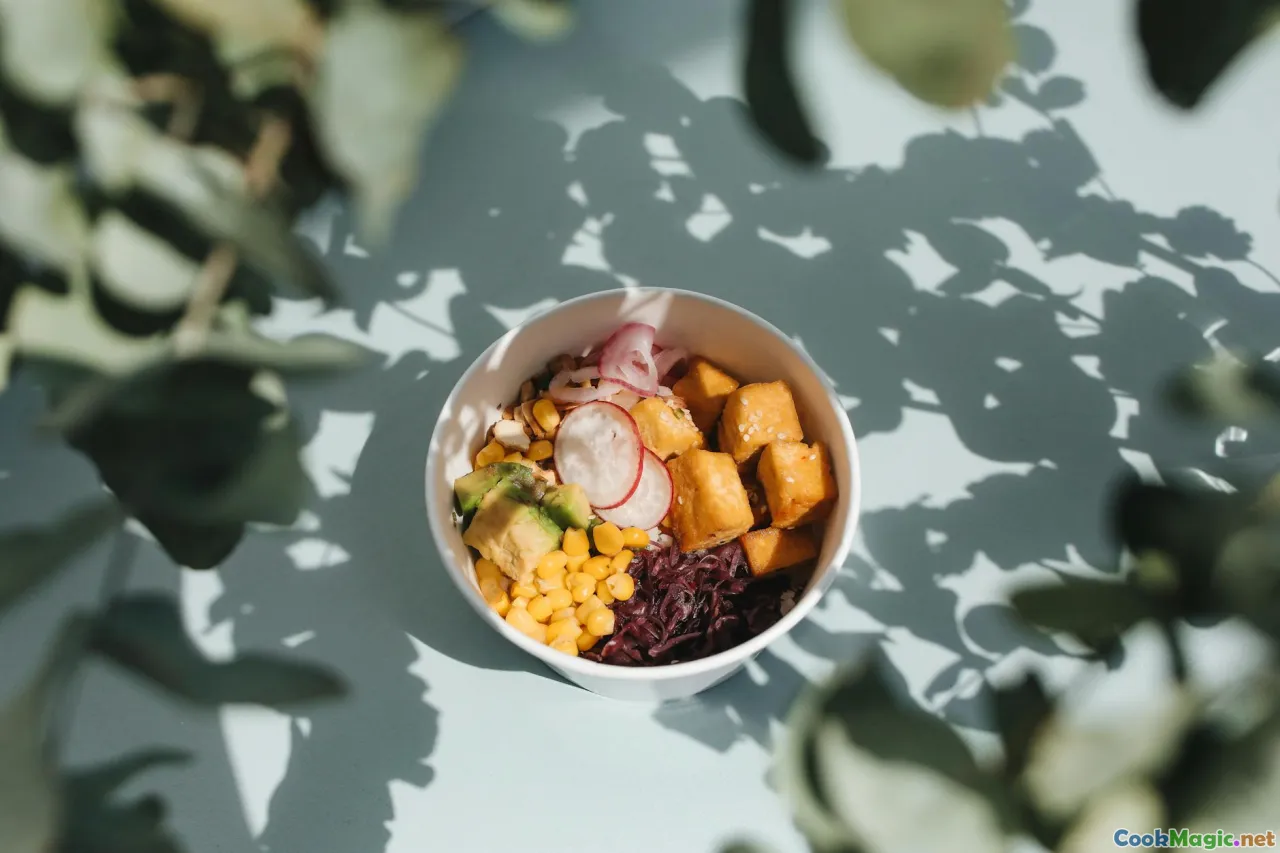Integrating Belizean Chaya into Vegetarian Cooking
8 min read Discover how to incorporate Belizean chaya into vibrant vegetarian dishes, blending tradition, flavor, and health in every bite. April 24, 2025 05:00
Integrating Belizean Chaya into Vegetarian Cooking
Imagine walking through the lush, sun-dappled streets of Belize, where the air is thick with the aroma of sizzling spices and fresh greens. Amidst this vibrant tapestry of culture and flavor lies a humble yet powerful leafy green: chaya. Often called the "tree spinach," chaya is a staple in Belizean kitchens and a treasure trove of nutrients. But beyond its traditional uses, chaya holds incredible potential for modern vegetarian cooking—bringing a taste of Belizean heritage to plates around the world.
The Cultural and Historical Significance of Chaya in Belize
Chaya, scientifically known as Cnidoscolus aconitifolius, is not just a vegetable; it's a symbol of resilience and tradition in Belize. Indigenous Maya communities have cultivated chaya for centuries, valuing it for its hearty leaves and adaptability to tropical climates. Historically, chaya was often reserved for special occasions or medicinal uses, but today it is a common sight in local markets—from the bustling streets of Belize City to the quiet villages nestled along the coast.
In Belizean culture, chaya is more than food; it’s a connection to ancestry, a link to the land, and a testament to sustainable, resourceful living. Its rich, earthy flavor and chewy texture evoke a sense of home, comfort, and tradition.
Nutritional Powerhouse and Culinary Potential
Chaya is a nutritional dynamo, packed with vitamins A, C, calcium, iron, and antioxidants. Its high fiber content makes it excellent for digestive health, while its low-calorie profile supports weight management. Traditionally, Belizeans prepare chaya as a stew, a side dish, or even as part of tamales, infusing dishes with its distinctive flavor.
However, modern culinary innovation can elevate chaya from a traditional ingredient into a star component in vegetarian cuisine. Its robust flavor pairs beautifully with garlic, lime, coconut, and spices—allowing chefs and home cooks alike to craft dishes that are both nourishing and bursting with Belizean character.
Preparing Chaya for Vegetarian Dishes
Before incorporating chaya into recipes, proper preparation is essential to neutralize naturally occurring compounds that can be mildly toxic if consumed raw in large quantities. Here’s a simple guide:
- Harvest fresh chaya leaves—look for vibrant green leaves with no yellowing.
- Wash thoroughly to remove dirt and potential pesticides.
- Blanch in boiling water for 2-3 minutes—this step deactivates toxins and softens the leaves.
- Drain and immediately immerse in ice water to preserve color and texture.
- Chop finely or process into purees depending on the dish.
Once prepped, chaya can be used in a variety of vegetarian recipes—so let your creativity run wild!
Creative Vegetarian Recipes Featuring Belizean Chaya
1. Chaya and Coconut Curry
Ingredients:
- Blanched chaya leaves, chopped
- Coconut milk
- Garlic and onion
- Curry powder and turmeric
- Bell peppers and carrots
- Fresh lime
**Method:**Sauté diced garlic and onion until fragrant. Add curry powder and turmeric, cooking briefly to release their aromas. Stir in chopped chaya and vegetables, then pour in coconut milk. Simmer until vegetables are tender and flavors meld. Finish with a squeeze of lime for brightness.Sensory notes: Creamy, fragrant, with a subtle bitterness balanced by the sweetness of coconut and the acidity of lime.
2. Chaya Stuffed Sweet Potatoes
Ingredients:
- Baked sweet potatoes
- Sautéed chaya with garlic and spices
- Crumbled feta or vegan cheese
- Fresh herbs (cilantro or parsley)
**Method:**Scoop out the cooked sweet potato flesh, mix with sautéed chaya, herbs, and cheese. Refill the sweet potato shells and bake until heated through. Serve hot, garnished with more herbs.Sensory notes: Earthy sweetness of sweet potatoes complemented by the savory, slightly bitter chaya filling.
3. Chaya and Bean Veggie Wraps
Ingredients:
- Whole grain or plantain wraps
- Mashed black beans or chickpeas
- Chopped blanched chaya
- Avocado slices
- Salsa or hot sauce
**Method:**Spread bean mixture on the wrap, layer with chaya, avocado, and salsa. Roll tightly and serve fresh for a nutritious, hand-held meal.Sensory notes: Fresh, crunchy chaya adds texture, while beans provide protein and heartiness.
Tips for Incorporating Chaya into Your Kitchen
- Experiment with flavor pairing: Chaya’s earthy profile complements citrus, coconut, spicy peppers, and tropical fruits.
- Use in soups and stews: Its hearty texture holds up well in slow-cooked dishes.
- Blend into smoothies or sauces: For a nutritional boost and a subtle green hue.
- Pair with grains: Like rice, quinoa, or corn for balanced, filling meals.
Personal Reflections and Culinary Inspiration
In my own kitchen, integrating chaya has been a revelation. I recall a Belizean friend sharing her grandmother’s chaya stew recipe, which I adapted into a vegetarian-friendly version with coconut milk and fresh herbs. The aroma of simmering greens, mixed with spices and citrus, transported me straight to Belize’s vibrant markets.
Cooking with chaya is more than just adding a leafy green; it’s about embracing a cultural heritage, respecting nature’s bounty, and creating dishes that nourish both body and soul. Its versatility invites us to think beyond traditional salads and stir-fries—imagine chaya stuffed pastries, vibrant bowls, or even chaya-infused flatbreads.
Final Thoughts: Embrace Belizean Chaya in Your Vegetarian Journey
Whether you’re a seasoned vegetarian or a curious cook eager to explore new ingredients, chaya offers a unique opportunity to connect with Belizean culinary traditions. Its distinctive flavor, impressive nutritional profile, and versatility make it a must-try for anyone passionate about vibrant, healthful, and culturally rich cuisine.
So next time you visit a farmers’ market or stumble upon a bunch of fresh greens, consider giving chaya a chance. With a little preparation and a dash of creativity, you can bring a piece of Belize into your home kitchen—transforming simple ingredients into extraordinary, meaningful dishes that tell a story of resilience, culture, and flavor.
Happy cooking!









